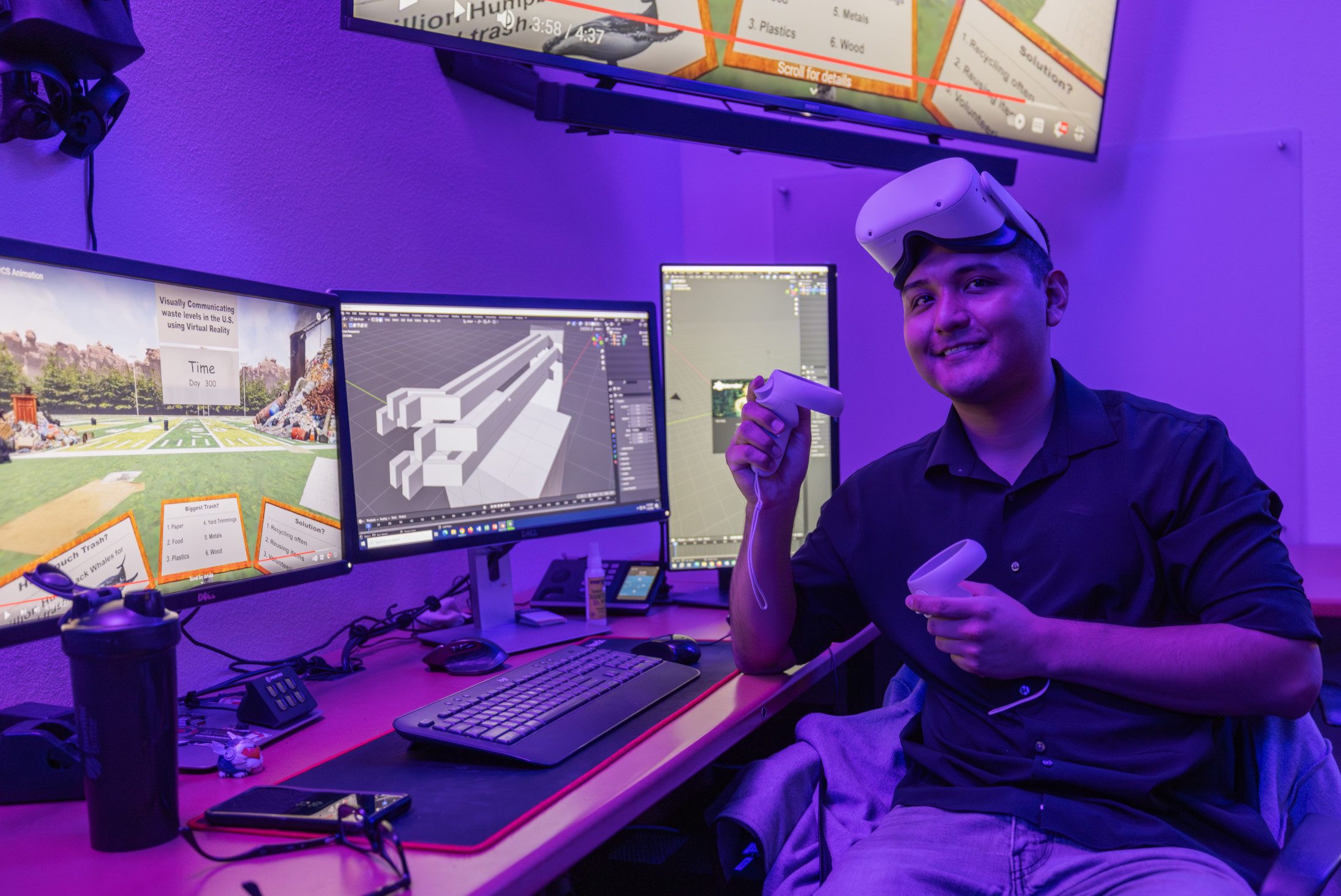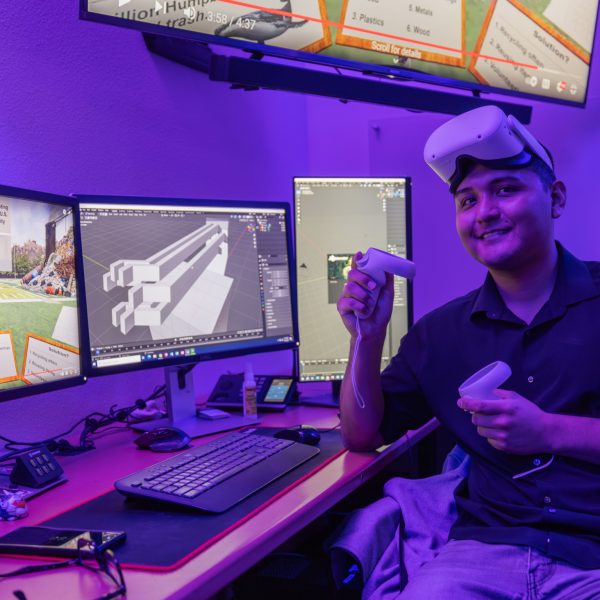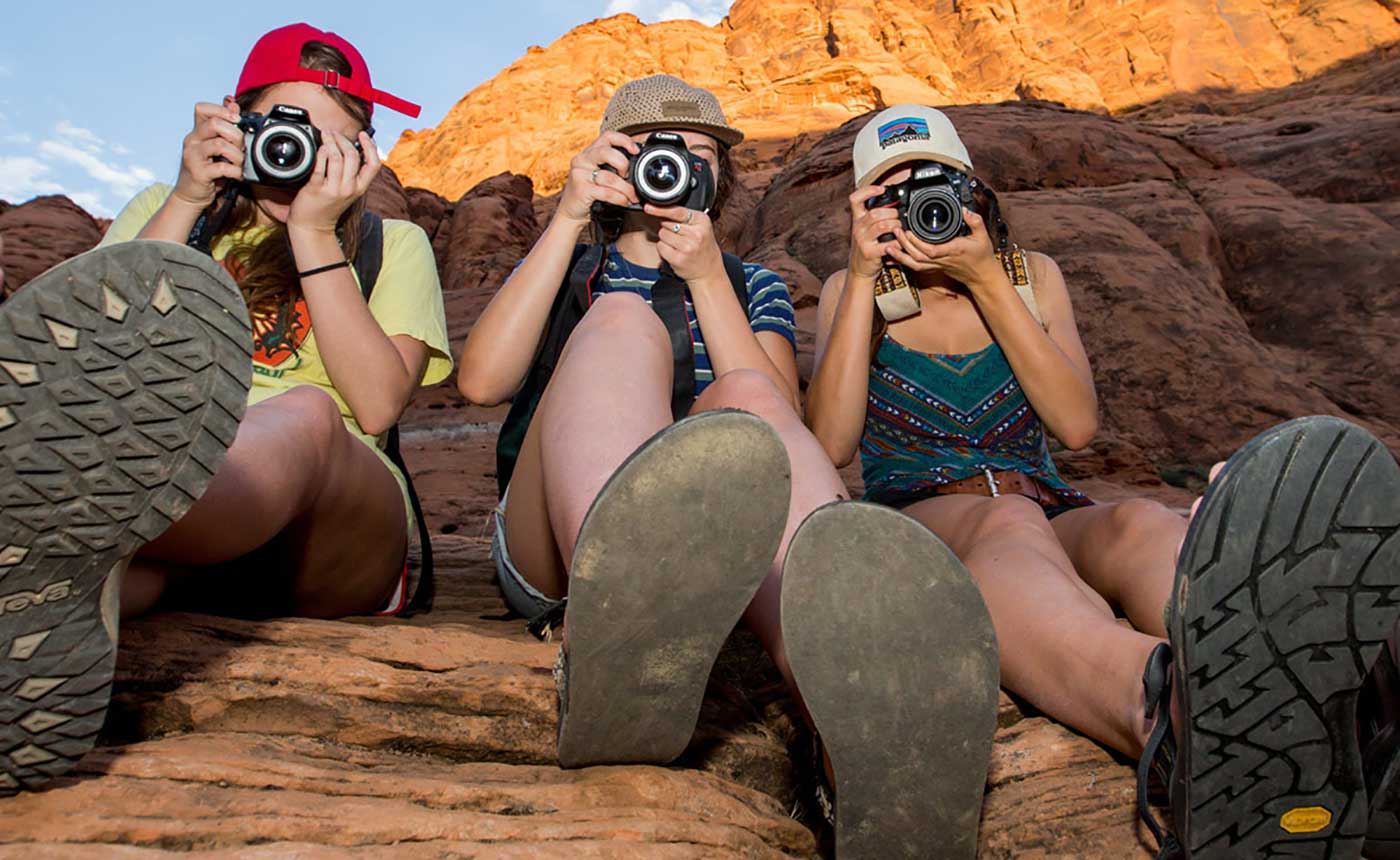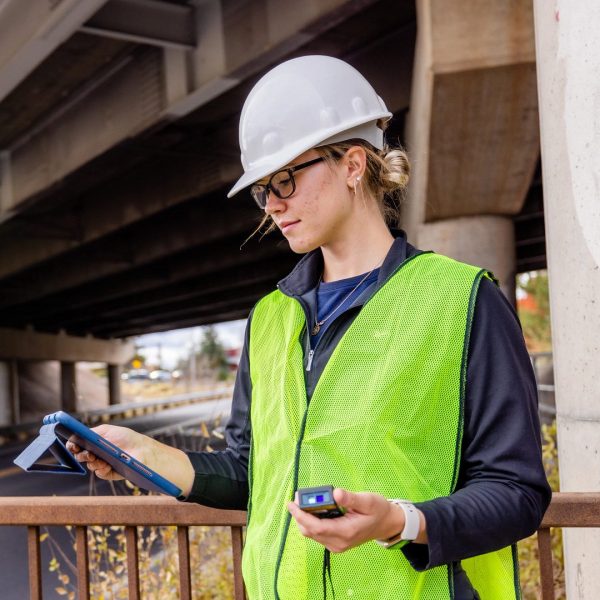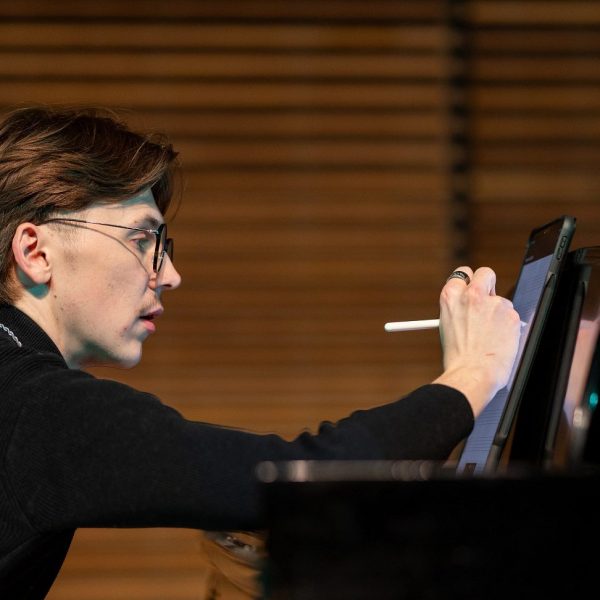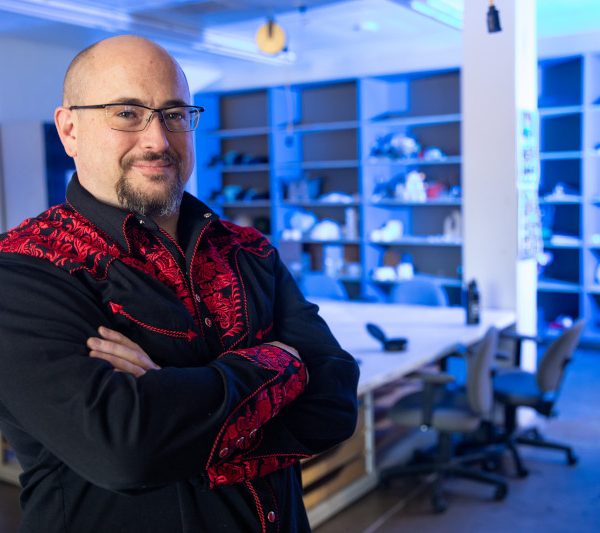Two hundred eighty million (280,000,000) tons. That’s how much municipal waste there is in the United States. For industrial waste, multiply that by 28. The numbers are mind-boggling. But instead of being overwhelmed, Dadric Riggs, a senior Visual Communication major, set out to inspire a change.
Born in Tuba City and raised in Flagstaff, Riggs is Diné. His clans are Towering House, Snake Clan, Black Sheep, and Many Goats. He began his journey into environmental advocacy with a simple realization: the sheer volume of waste produced in the US is staggering. Determined to shed light on the issue, he embarked on a mission—with financial support from the Student-led Projects in the Arts, Creative Activity, and Scholarship program—to make these abstract numbers visible.
Virtual reality highlights real problem
His research project originated from an animation class assignment. Using Unreal Engine 5 software, Riggs created a virtual square mile environment to convey the scale of waste production in the US. “I wanted to communicate how much trash would fit in an area using a scaled-down environment,” he explains. “So I took the total surface area of the United States, which is a big number, and I divided that by the square mile. And then I took the total amount of trash in the United States, according to the EPA, multiplied that by that multiplicative scalar, and figured out how much trash would fit in a square mile environment.”
By scaling down the country’s total surface area and calculating the average amount of trash per square mile, he provided a tangible representation of the problem. However, a square mile is still an abstract concept, and inspired by his success, he decided to take the visual one step further.
What if, he thought, he used a familiar space—something everyone could imagine, like a football field? With help from math tutors in the Adel Mathematics building, he shrank the scale further to see how much the waste would pile up on a football field.
Leveraging Adobe Illustrator, Riggs is now developing a virtual reality (VR) simulation, allowing viewers to “stand” above the field and witness the trash piles. The simulation includes interpretive signs addressing waste-related issues. “The video will start with the user standing on a platform with guard rails, then the platform moves,” he says. “It first flies through a little of the city towards my custom-made football field.”
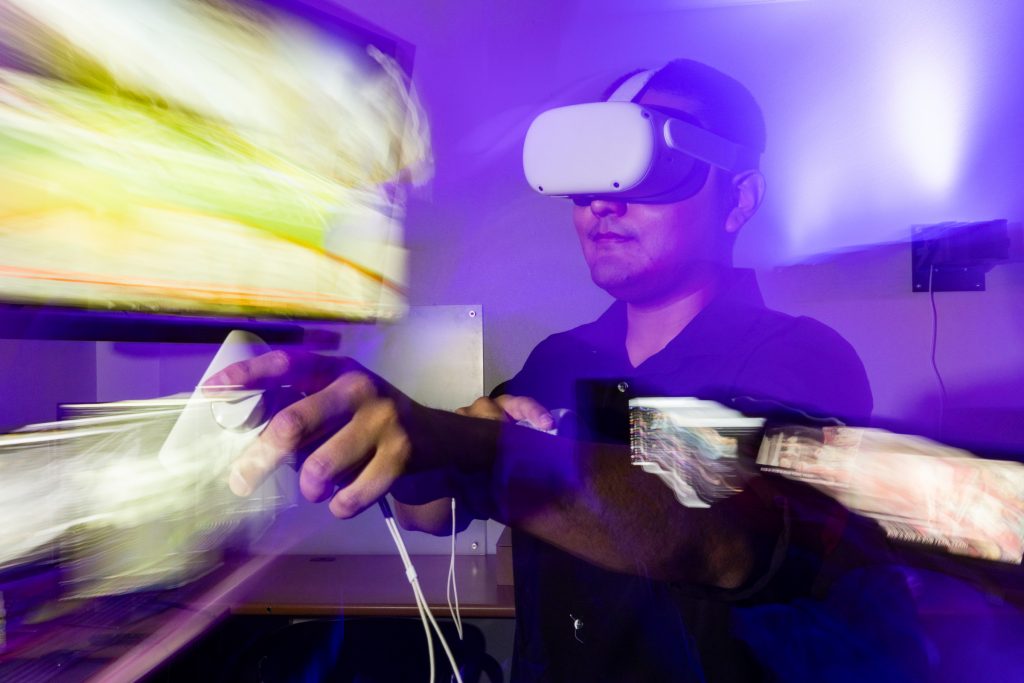
Every detail has been meticulously constructed, including 3D people who populate Riggs’ virtual city. Riggs also delves into the weight calculations, revealing that US landfills average 1,000 pounds per cubic yard. By compacting the trash and calculating its volume in the shape of a hemisphere, Riggs ensures accuracy in his visual representation.
The final touch involves integrating a 3D hemisphere into Unreal Engine 5, accurately reflecting the calculated dimensions. This virtual representation replaces the hemisphere with custom 3D municipal and industrial trash piles. Riggs hopes this immersive storytelling approach, complemented by 2D animations displaying numerical calculations, will provide a unique perspective on the scale of the issue and inspire action.
Experience 3D VR story at Undergraduate Symposium
“I hope this perspective of scale helps people understand how big the full trash piles are in relation to something we’re all familiar with,” Riggs says. “A simple football field, people, and a city. On the platform’s guard rail, a screen will play additional 2D animations that show the numbers and equations, so people can witness the numerical calculations as well as the 3D VR experience for immersive storytelling.”
He has plans to present his project to high school students in Flagstaff. You can experience it for yourself on April 26 at the Undergraduate Symposium at the High Country Conference Center. Looking ahead, Riggs is preparing to transition from student to professional with a portfolio brimming with innovative projects and a 3D vision for his career.

